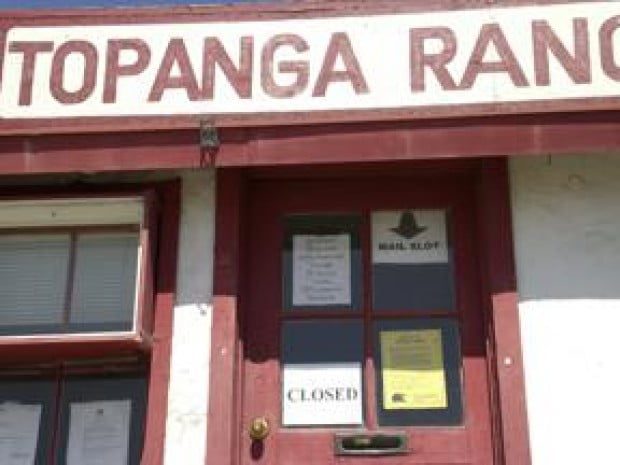State Parks officials say that lawsuits and relocation costs of residents have depleted a large part of their operating budget to implement changes to Lower Topanga State Park.
By Melonie Magruder / Special to The Malibu Times
After the purchase, in 2001, of more than 1,600 acres in the Lower Topanga area by the California Department of Parks and Recreation, longtime residents and squatters were evicted from the property in order to make way for a plan of revitalization intended to restore the natural beauty of the land and provide groomed parkland for daytime visitors. However, since the eviction of the Lower Topanga tenants through eminent domain practice, very little has changed in the area.
“We have demolished over half of the structures scheduled to be razed in the park area,” Lynette Hernandez, acting superintendent for the Topanga sector of Park Services, said. “The others are scheduled to be removed by the end of June.”
Meanwhile, a transient population has taken up residence in the rapidly deteriorating houses, creating possible fire hazards and accelerating the general trashing of the area.
“We have tried repeatedly to prevent people from occupying the remaining structures,” Roy Stearns, spokesman for California State Parks, said. “It’s cost a lot of money.”
The seemingly sluggish progress of development by State Parks is due to manifold causes, including lawsuits brought by former residents reluctant to leave the area, Stearns said.
“All lawsuits were decided in favor of State Parks,” he said.
Also, lack of money to implement changes has held up plans.
“We’ve paid out over $1.2 million in compensation to departing residents just in 2006 alone,” Hernandez said. “That took a large part of our operating budget.”
Upon court confirmation that all evictions were proper, State Parks began the task of removing old structures and debris. The problem now is that they are operating under an interim plan permit, which does not allow any construction of permanent structures, such as a visitor center.
“We are waiting for an historic structure report on the Topanga Ranch Motel,” Hernandez said. “The idea is that we will refurbish those cottages for commercial use.”
A park security and maintenance officer and his family now occupy the motel site.
A permanent general plan is yet to be created for development of the Lower Topanga site.
“Development of general plans require certain budgets, so we take them up as we can,” Stearns said. “Although, it is a top priority to put one in place as soon as possible.”
Hernandez echoed the desire to get a general plan in place quickly.
“We have several ideas to implement, including removing a large berm that will restore the lagoon,” she said. “We would like to remove non-native plants and concentrate on re-introducing native flora.”
To galvanize this effort, State Parks has planned an Earth Day event at Lower Topanga on April 21 that will include planting of native species. Hernandez said she hopes to see funds from the recently passed Proposition 84, the Clean Water, Parks and Coastal Protection Act, utilized in Lower Topanga’s further development.
Meanwhile, bruised feelings remain amongst former residents of the area who were required to relocate. Pablo Capra recently published a lengthy diatribe in the Topanga Messenger, excoriating the State Parks department for what he perceives as mismanagement of the project-from heavy-handed eviction procedures to irresponsible stewardship of historically significant structures.
Robert Overby, known to locals as “Baretta,” lived in Lower Topanga since 1977.
“I built a shack behind Carol Winters’ house, but I had to leave also, with all the other evictions. It’s a shame, because this was a historic, old community,” he said.
Lower Topanga has a long and storied history, with an artists’ colony being inhabited by craftsmen, mavericks, otherwise homeless people and vacationers who arrived at the Topanga Ranch Motel and simply decided not to leave.
Overby’s residency in Lower Topanga has yielded two books about the peripatetic lifestyles of the old community. But he acknowledged that the changes slowly taking place are beneficial.
“They’ve put in picnic tables and the park is coming to life around the old Snake Pit,” he said. “They’ve gotten rid of debris and archeologists have been digging around. They’ve even put a switchback trail going up to the ridge.”
Overby continues to park his RV in front of the Topanga Ranch Motel every day, moving it at night to comply with local loitering laws.
“Angel, the park ranger at the motel asks me all the time, ‘Mr. Overby, when are you going to find a place to live?,'” Overby said. “I was around when they evicted people from Topanga Beach back in 1978. I’m not going away any time soon.”

